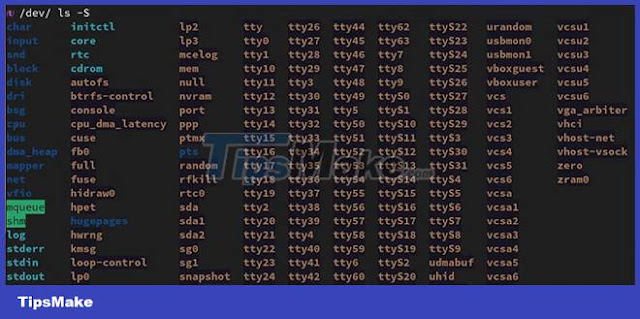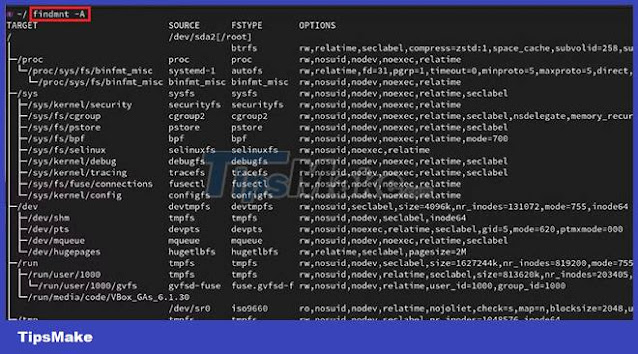How does the Linux Kernel function?
The Linux part resembles an extension that permits processing correspondence among applications and equipment, as well as dealing with the framework's assets.
Linus Torvalds fostered the Linux bit with C and Assembly, so he prevailed with regards to making a lightweight and versatile center that was delivered to people in general as open source.
You can see the Linux portion in different fields like space, registering, smartwatches, cell phones, advanced mechanics and wellbeing. In any case, have you at any point thought about how the Linux part functions?
Utilizing equipment on Linux
The Linux portion, most importantly, controls which equipment to run and how when you turn on your PC. What's more, best in class programming control is potential on account of the programming connection point. To give instances of these controls, you can see data about the equipment introduced in the openings on your motherboard and benefit from this understanding.
What's more, this programming connection point gives a reflection layer. For instance, in the event that you need to video visit with companions, you'll require a webcam. The deliberation layer makes it workable for the product you use to utilize this webcam paying little heed to maker and model. The product here can involve interfaces that exist for Linux. The Linux bit deciphers this point of interaction's capability calls into genuine equipment orders that the webcam needs.
Utilizing the/proc and/sys virtual record frameworks, the Linux piece can yield definite data about the equipment it recognizes. Underneath you can see a portion of the instruments utilized for this, as well as which gadgets and cards they yield:
- lspci: For PCI gadgets
- lsusb: For USB gadgets
- lspcmcia: For PCMCIA card
As may be obvious, the Linux dissemination in the screen capture above runs on VirtualBox. Notwithstanding, you get an opportunity to see a great deal of data like VGA regulator, USB, span and SATA regulator.
You can likewise utilize the - v boundary for more nitty gritty data.
In the Linux portion, applications typically access the gadget through unique documents that exist in the/dev catalog. These unique documents address drives and other actual gadgets. Documents, for example,/dev/hda,/dev/sdc,/dev/sdc3,/dev/input/mouse0 and dev/snd/* are instances of these exceptional records.
Linux record framework the executives
The document framework is one of the most eminent parts of the Linux bit. The Linux record framework is quite possibly of its greatest advantage. All records on a Linux framework are accumulated into a solitary branch. Hence, clients can utilize this order to get to where they need to go.
The beginning stage of this pecking order is the root catalog (/). Different subdirectories are under the root index. The most involved subdirectory in/is the/home catalog. This subdirectory contains different subdirectories and every registry contains the genuine information stockpiling records.
For instance, you can imagine a text document on the work area. In the event that you make a text document named helloworld.txt on your work area, you can call it/home/muo/Desktop/helloworld.txt. The/muo model here will obviously differ from one case to another. As this subfolder name relies upon your current username. With this naming framework, the Linux part switches between the genuine stockpiling and the actual stockpiling that exists on the drive.
What's more, the Linux portion can coordinate information from a few drives. This is where the mount framework becomes possibly the most important factor. It involves one of the drives in the root foundation and mounts the others to existing catalogs in the progressive system. Different drives are then positioned under the mount focuses. This permits clients to store the/home registry on a second hard drive that likewise contains different subdirectories.
At the point when you mount the drive to the/home catalog, you can get to these registries from ordinary areas. Consequently, ways like/home/muo/Desktop/helloworld.txt keep on working.
You can see the mount focuses between documents on your framework with the findmnt - An order.
With many record framework designs, you can store information on the drive. The most commonly realized on Linux are the ext2, ext3 and ext4 record framework designs. Be that as it may, there are numerous other record framework designs. Regardless, you should arrange the document framework prior to mounting it. You can utilize orders like mkfs.ext3 (mkfs means 'make document framework' - make record framework and ext3 is document framework) for this.
These orders acknowledge the gadget document way that you need to organize as a boundary. This is a hazardous activity and you ought to utilize it with alert to erase or reset the record framework unintentionally.
Also, there are network record frameworks like NFS that the Linux piece utilizes. NFS is an organization record framework where information isn't put away on a neighborhood drive. With NFS, information makes a trip over the organization to a server that stores the information. Since the information will dwell on a server, the client doesn't need to handle it continually. They can likewise utilize Linux's conventional various leveled document framework to no one's surprise.
General capabilities
All product in a Linux framework has normal capabilities. To this end these capabilities are focal in the Linux portion. For instance, while opening a record, you can open it by the document name without knowing where the record is genuinely put away, which capabilities and tasks it will utilize. This multitude of capabilities are as of now in the piece.
You can store your records on your hard drive, split documents between different hard drives, or even keep documents on a distant server. Shared document correspondence capabilities are significant in such cases. Applications trade information paying little mind to how the information is moved. The common correspondence capabilities are there to play out these information trade processes. This development can be over a remote organization or even a landline telephone line.
Process Management in Linux
The dynamic variant of a program that works on information or data in memory is known as a cycle. The errand of the Linux bit is to make and screen these memory regions. The part dispenses memory for a running project and loads the executable code into memory from the record framework. Following, the piece runs the code.
Linux portion upholds performing various tasks. It is fit for running different cycles simultaneously. In any case, there is just a single exchange any given time span. In any case, the Linux portion partitions time into little lumps, and subsequently every strategy happens consecutively.
Since these modest fragments are in millisecond increases, they are dynamic just at explicit times and idle until the end of the time. The Linux bit's work here is to amplify execution by running different cycles simultaneously.
In the event that the time span is too lengthy, the running application may not answer as you anticipate. In the event that the time period is excessively short, there might be issues with evolving errands. Contingent upon the need of the interaction, how much time expected here will fluctuate. You might have known about high-need cycles and low-need processes previously. This is one of the capabilities that the Linux portion controls.
This clarification isn't right 100% of the time. The genuine limit is that there must be each laborer cycle per processor center in turn. Multiprocessor frameworks permit a few cycles to run in equal. An essential framework quite often has many cycles running.
Consents in Linux
Similarly as with other working frameworks, you can make different clients on a Linux framework. In such cases, there is a rights the executives situation that upholds individual and gathering clients. This is where client and document authorizations become an integral factor.
The Linux portion oversees information and actually looks at the vital consents for each interaction. For instance, in the event that you attempt to open a record, the portion should really take a look at the cycle ID for consents. Assuming the piece checks and finds that you have authorizations, it will open the document.
As may be obvious, the Linux piece screens all that from record security to making clients and downloading documents from the Internet. Everything is in a specific request. Each client has consents. Linux portion oversees cycles and spans for maximized operation.
Besides, the document framework, which is quite possibly of the greatest element that recognizes the Linux piece from other working frameworks, is vital. Linux isn't something of a secret. Conversely, all records and source code are available. To more readily comprehend the reasonable and strong nature of the Linux part, you can inspect the Linux catalog ordered progression.
Tags
Technology




